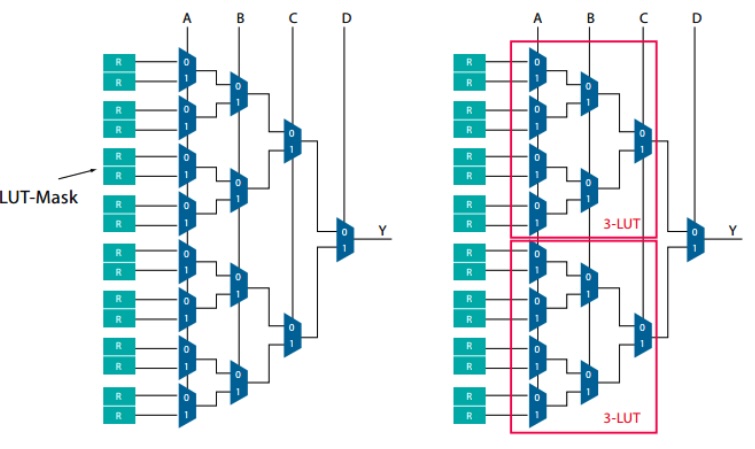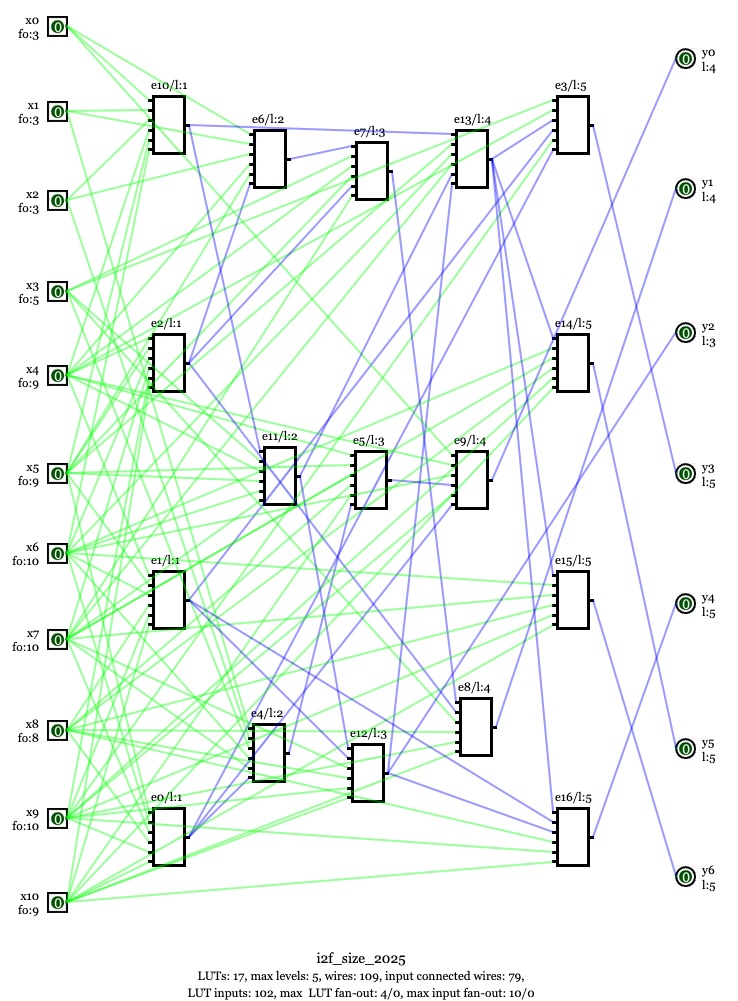 George Toms synthesis Home
George Toms synthesis Home
New Challenges for the FPGA Logic Synthesis Stage
(Int to float converter)
As modern FPGAs continue to scale, wire area and delay are
becoming more dominant than logic-related delays. Wire quantity and length all contribute to wire area.Additionally, larger LUTs (with more inputs) result in higher delay, increased area usage, and greater power consumption. Reducing the number of LUT inputs by just one can lower area and power usage by more than 2×. For example, a LUT-4 can be built from two LUT-3s connected by a 2:1 multiplexer.

High fan-out of circuit inputs, along with the need for buffering and replication, further worsens area and delay.
In the GTs synthesis technology, we addressed all these issues during the logic synthesis stage.
However, current evaluations of LUT-6 mapped benchmarks typically rely on only two parameters:
-
the number of LUTs, and
-
the number of logic levels.
-
Total number of wires
-
Number of input-connected wires
-
Total number of LUT input pins used
-
Maximum fan-out for circuit inputs and LUT outputs
Original version "int2float_size_2024" of the "Int to float converter" circuit in the best result IPFL benchmark 2024

This version has the following characteristics:
-
LUT count: 18
-
Logic level count: 5
-
Total wire count: 115
-
Input-connected wires count: 87
-
Total LUT input pins used: 108
-
Maximum input fan-out: 12
GTs version "i2f_size_2025" of the "Int to float converter" circuit

This version "i2f_size_2025" has the following characteristics:
-
LUT count: 17
-
Logic level count: 5
-
Total wire count: 109
-
Input-connected wires count: 79
-
Total LUT input pins used: 102
-
Maximum input fan-out: 10
-
Reduces LUT count by 1.06× (5.6%),
-
Reduces LUT area and power
consumption by 1.058× (5.5%),
-
Decreases wire area and power
requirements minimum by 1.055× (5.2%),
-
Cuts the circuit input buffer
count from 4 to 0 (max input fan-out from 12 to 10),
-
Lowers the usage of input-connected
(longest) wires by 1.10× (9.1%).